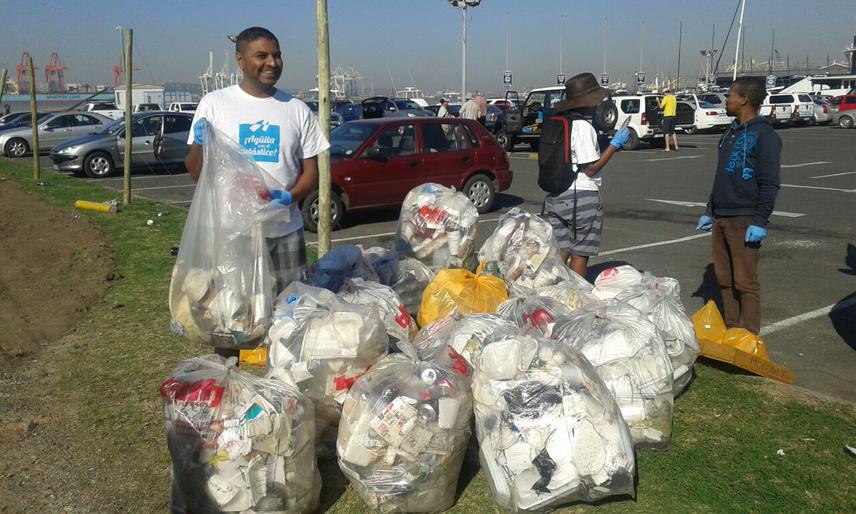Social media video featuring the project.
Offshore sampling for surface plastics
9 Nov 2015 Durban, South Africa, Africa Education | Fishes
This project aims to investigate microplastic ingestion by juvenile and larval fish both in situ and in experimental studies. We also aim to collect and quantify microplastics from offshore sampling sites around the Durban area.

Harbour cleanup with Refilwe Mofokeng.
Durban harbour hosts over 140 species of juvenile fish and is one of the largest and busiest estuarine habitats on the east coast of South Africa. It is an important nursery area for fish but also receives water and waste from many streams and industrial inlets. The sediments and water column of Durban harbour are heavily polluted with microplastic particles and a high percentage of mullet (Mugil cephalus) have been found to ingest particles in a previous investigation. It is likely that post-larval and juvenile fish are also ingesting plastic, but neither the rate of ingestion nor the potential biological and population effects of such ingestion have been investigated.
This project will thus fill an important knowledge gap by investigating microplastic ingestion by larval, post-larval and juvenile fish from the harbour. The types of microplastic ingested will be characterised and compared to that present in the environment. Field work will be coupled with experimental investigations designed to model any population effects that may occur. The quantity of microplastics within a coastal eddy system in Durban will also be quantified. Investigating plastic ingestion by fish will enhance our understanding of how plastic debris affects fish fauna and if ingestion affects the overall growth or has effects on fish populations in the harbour. Many estuarine dependant fish species are already declining due to overfishing, smaller river catchment areas and various other factors. Therefore, adding plastics to the equation may make matters worse. Larvae and post-larvae may be particularly vulnerable to the effects of ingesting microplastics, yet few studies have been conducted on these life stages.
Social media video featuring the project.
Offshore sampling for surface plastics